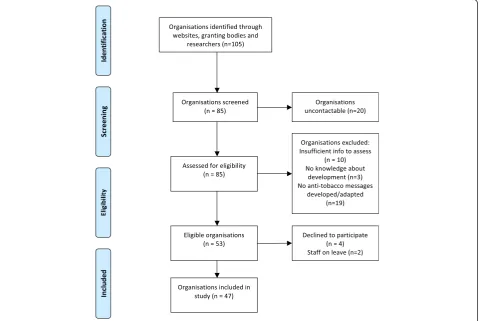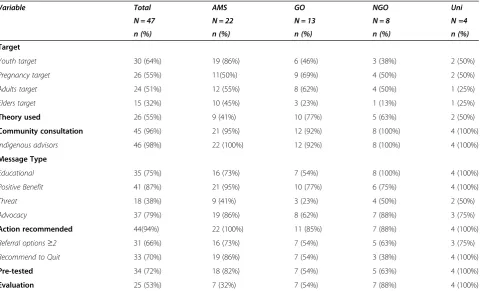Developing anti-tobacco messages for Australian Aboriginal and Torres Strait Islander peoples: evidence from a national cross-sectional survey
Full text
Figure

![Figure 2 Beattie’s health promotion model. (Adapted from Beattie A. [19]).](https://thumb-us.123doks.com/thumbv2/123dok_us/153640.30784/4.595.61.541.526.715/figure-beattie-s-health-promotion-model-adapted-beattie.webp)


Related documents
The focus is on invasive epithelial cancer, which is the major contrib- utor to mortality in this disease. The key strength is that selection bias is minimised as signi fi cant
The objective of this quantitative research was to discover if perceptions of homework effectiveness and homework purpose differed between teachers and parents, teachers in different
The microspheres were evaluated for particle size, densities, flow properties, morphology, recovery yield, drug content, and in vitro drug release behavior.. MATERIALS
mutant mice, including zero maze, open field, locomotor activity, food intake, rotarod, tail suspension, fear condi- tioning assays (context and trace), prepulse inhibition, and
The resultant framework consisted of several hundred individual design principles that represent the causal relationships between contextual factors, managerial interventions,
A value of multiple linear regression equation between independent variable X, that is human capital (X1), money capital (X2), social capital (X3), knowledge
by the study (as discussed in chapter four), the secondary data sources used (discussed below) and the data analysis techniques adopted (discussed in the subsequent section) to
Through the examination of fictional, autobiographical, historical and political, legal, prosaic and poetic texts of several contemporary Native/First Nations

